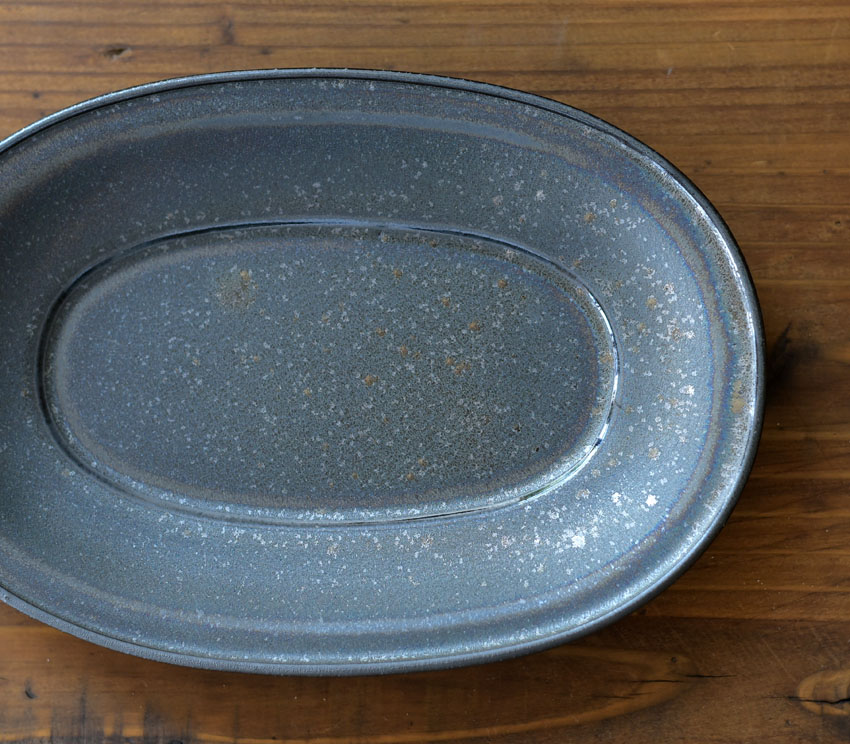当日発送について
以下の条件に該当するご注文を当日配送いたします。
・平日(営業日)の12時までにご注文が完了。
・ご注文いただいた商品の在庫がすべてある場合。
・お支払方法がクレジットカード決済か代引きの場合。
※受注状況や確認事項の有無などにより、お時間をいただく場合がございます。
※12時以降のご注文は最短で発送いたします。
定休日のご案内
土日祝日、お盆、年末年始などは出荷業務をお休みいたします。
Now Loading...
以下の条件に該当するご注文を当日配送いたします。
・平日(営業日)の12時までにご注文が完了。
・ご注文いただいた商品の在庫がすべてある場合。
・お支払方法がクレジットカード決済か代引きの場合。
※受注状況や確認事項の有無などにより、お時間をいただく場合がございます。
※12時以降のご注文は最短で発送いたします。
土日祝日、お盆、年末年始などは出荷業務をお休みいたします。
マリニエールとは、漁師風という意味。
新鮮な食材をブツ切りにして、シンプルな味付けで調理する。
気取らず豪快に盛り付ける料理はなんとも食欲をそそります。
そんなワイルドな漁師料理をイメージしてできたラインナップ。
テーブルの中央にドカンと置いて料理をシェアしたり、焼き菓子などを並べ置いたり、
カレーやパスタを盛り付けても様になる万能な形です。

白と黒の2色展開のシリーズで、ベースの土は黒土を使用しています。
白はもったりとした白い釉をかけることで、縁回りの黒色にエッジを効かせました。
黒は鉄系の釉を使用しており、ギラリと光る部分があったり、
鈍くマット調の質感をしていたりと均一ではない表情に本物の鉄の質感を思わせます。
また窯や季節などの環境で釉薬の風合いも左右され、艶感やギラギラ感が増したりマット感が強くなったりと、
コントロールできない部分もありますが変化のある魅力的な釉薬です。
↓ 上/艶感のある時 下/マット感のある時
↓ 上/ギラギラ感のある時 下/マット感のある時



330、270、190オーバルプレートの3サイズ展開。
330プレートはまさに豪快な料理を盛り付けるイメージで、深さもしっかりとあり、汁気のある料理でも安心感があります。
丸ごと一匹の魚を盛り付けたりアクアパッツァ、豚や牛肉のオーブン焼きなどはもちろん
シンプルな塩むすびやサンドイッチ、鍋の具材を入れる大皿としてなど家族分の料理を盛り付けられます。
270プレートはカレーやパスタ、
190プレートは副菜を2品盛り付けたり、取皿としても使いやすいサイズです。



白と黒のシンプルな配色ではありますが、黒土を生かしながらそれぞれに個性的で奥行きのある色味で、
色彩豊かな食材の色との相性も抜群です。
新鮮な食材を使ってシンプルかつダイナミックな料理をお楽しみください。